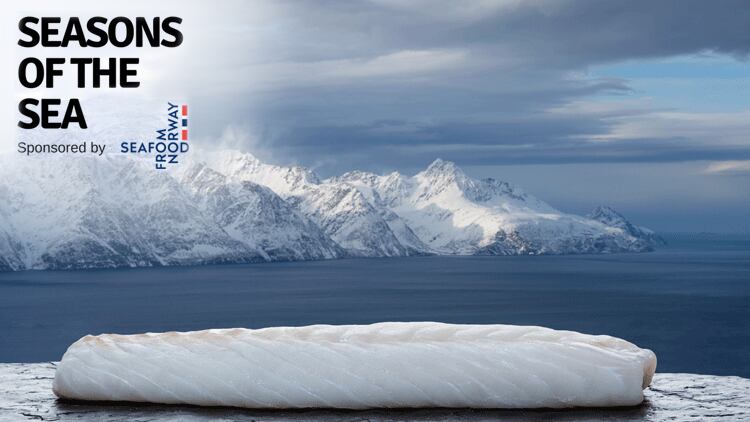A few years back red meat was regarded by chefs as the as the hero protein of their menus, but more recently the tide has turned, with seafood starting to take centre stage at some of the capital’s hottest new openings.
There are a number of reasons for this sea change. In today’s eating out environment, consumers have become more demanding about what they want from a restaurant and are increasingly seeking more interesting dishes. Where many chefs once regarded fish dishes as simply for those who didn’t want to eat meat they now see seafood as a way of introducing customers to new flavours and cooking techniques, often using the super fresh and seasonal nature of seafood as a hook.
Seafood, for example, can add a whole new dimension to a menu at certain times of the year. Take Skrei cod, the highly-prized fish from Northern Norway that is only available between January and April each year. Hailing from the world’s largest cod stock and enduring an arduous migration through Arctic waters, Skrei are larger than coastal cod and have a firm consistency with very white, flaky meat. This fish has a certified, quality label and is regarded as a delicacy by chefs. By serving Skrei, chefs can celebrate seasonality and add a point of difference to their menus to cater for the more adventurous and inquisitive diner.
The hook of healthier eating
Serving high quality Norwegian cod and haddock, which is known for its distinctively chunky white flesh thanks to the country’s cold and clear waters, is also a way of giving customers delicious healthy options that fit with their lifestyles. Loved the world over, Norwegian cod is an incredibly lean choice, with a fat content typically lower than 3% and 96% of the calories in a portion coming from protein. Cod is also high in Vitamin A, Vitamin B12 and selenium.
The current consumer shift to healthier eating and a general reduction in the consumption of red meat also provides opportunities for chefs to take advantage of the health properties of seafood. Fish such as salmon is naturally high in healthy omega-3 fatty acids and can be served in many different ways, both raw and cooked.

The sustainable choice
Serving more seafood will help chefs tackle another issue of growing importance in the restaurant world: sustainability. Unlike mammals which use energy to stand upright and regulate their temperature, seafood such as salmon has a much lower carbon footprint than meat with fish requiring comparatively little feed for the amount of protein they provide.
Chefs buying Norwegian fish such as cod and haddock can also rest assured that they are being supplied from MSC certified stocks that are closely scrutinized to ensure that there is no overfishing.
“Norway was the first to implement a fishing quota system and zero waste discard ban. The quotas that have been put in place are recommended by The International Council for the Exploration of the Sea (ICES) [a global organization that develops science and advice to support the sustainable use of the oceans],” says Hans Frode Kielland Asmyhr, UK director at Norwegian Seafood Council. “By implementing these strict quotas, it enables them to maintain healthy fish stocks, ensuring they have never - and will never - overfish.”
Aquaculture is an important part of sustainability and is something that Norway has embraced and continued to develop ever since Norwegian fish farming began in the 1970s when wild salmon from 40 different Norwegian rivers were collected to breed in the first ever ocean-farmed floating sea pens. Today, Norway continues to use its expertise in ethology, marine biology and technology to ensure food safety and the future of the industry. Despite aquaculture being a major industry in Norway, only 0.5% of its sea is populated with salmon farms.
These farms must be located in the open sea, in the cold and clear waters of the Norwegian fjords, with currents supplying fresh flowing water and fish having ample space to swim and grow in a clean environment (Norway guarantees at least 97.5% water to every 2.5% salmon). The number of farms is restricted and licensed to avoid excessive development and all fish are treated with the utmost care.
All wild caught Norwegian cod and haddock is also MSC certified, giving chefs full peace of mind about the product they are using.
For more information on Seafood from Norway click here

